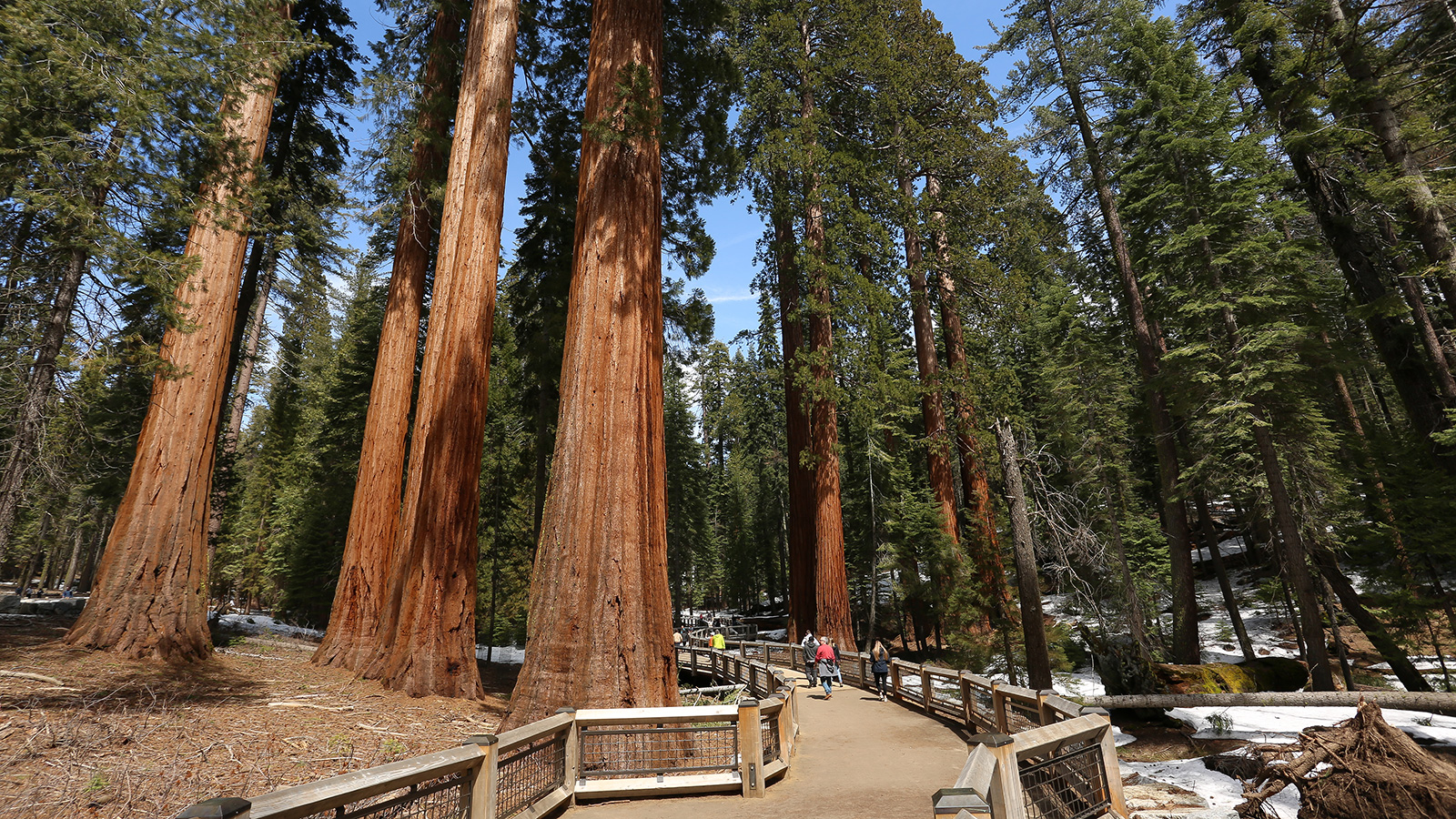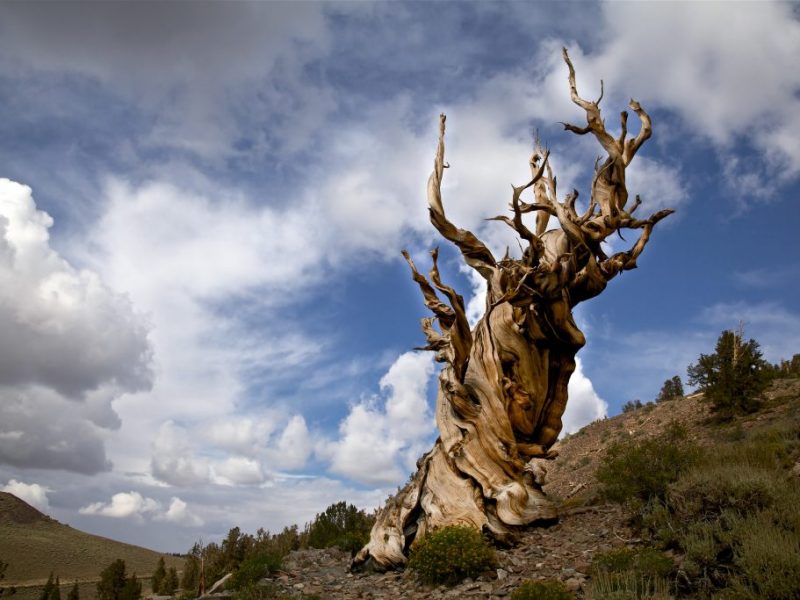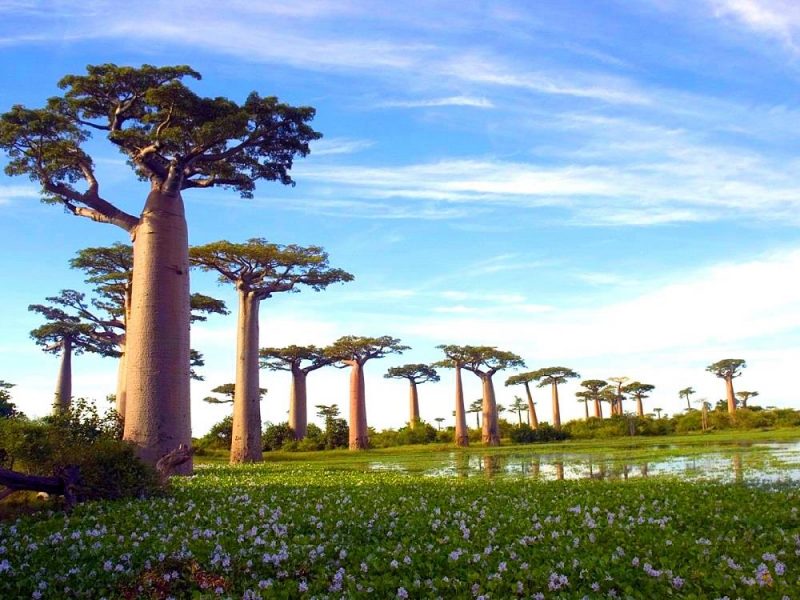When navigators first set foot on North American soil, they were amazed and delighted by the impressive size and unusual appearance of a tree that only grows in this region. Because their range is the California highlands, they are called Californian pines or mammoth trees.
The English botanist John Lindley, who studied the tree, decided to give it a scientific name in honour of Wellington, the military leader who defeated Napoleon: Wellingtonia gigantea. But American botanists “renamed” it in honour of their national hero and called it Washingtonia gigantea. But even this name was inconclusive. Scientific research has revealed that the tree is a new species belonging to the genus Sequoia evergreen (Sequoia sempervirens), a plant long known to science. This member of the sequoia genus is smaller in size but longer-lived. For this reason, the newly discovered tree was given the generic name Sequoia gigantea.
Incidentally, the word sequoia itself is not, as some botanists have suggested, a simple set of sounds or an ordinal arrangement of seeds. Sequoyah is the name of one of the national heroes of the Cherokee Indian tribe. Thus, the plant’s name commemorates a leader who fought against the European invasion of America, created a syllabic alphabet (writing system) for his people and even published a newspaper, the Cherokee Phoenix, in that language.
Description of the species
Scientists speculate that giant pines could once be found in any region of the northern hemisphere. Today, however, they are only good in their natural environment on the North American Pacific coast. The giants, which grow in the Muir Woods Reserve, Redwood National Park (California) and in small areas of Texas (USA) in eastern Canada, are under state protection.
These giants belong to the cypress family, which includes three genera of sequoias:
- Sequoia sempervirens, also called coast redwood or sequoia (Redwood);
- Sequoiadendron giganteum, Sequoiadendron giganteum, which is exactly the genus of tree we all know as sequoia;
- Metasequoia, which grows in China and is not large in size, the evergreen metasequoia.
Larger trees, which differ in height and trunk thickness, include only the first two genera. The usual average height of the sequoia exceeds 60 m with a trunk diameter of about 6 m. But there are also giants among them, which are between 100 and 115 m high and more than 18 m thick. But the giant sequoia cedar is considerably smaller, “only” 70-90 m high, while the diameter of its trunk can exceed 37 m. The weight of the timber from a single plant can be 1000-2000 t. At the same time, they are very long-lived, surviving up to 2-3.5 thousand years. But among the currently known giants there are specimens that are more than 6000 years old.
Their annual growth is largely determined by weather conditions, so the study of the annual rings of redwoods is important for studying the climate of our planet and climate change. It is not necessary to cut down relict trees to draw conclusions about air temperature or precipitation. Modern science has developed a gentler way of research. With a special auger, a plate is extracted from the trunk, a thin slice that includes all the annual rings. Damage to the tree is minimised and scientists can study the pattern of climate change in the area in depth.
The straight trunk of a sequoia is covered by thick (up to 30-80 cm), soft, fibrous and easy to peel bark and thin branches that start almost at the ground. However, over time, the lower lateral branches will die. A conical (pyramidal) crown crowns the top of the tree, which is completely bare underneath. The branches are almost horizontal with a slight downward slope. Young trees have small, flat, elongated leaves, 15-25 mm long. They change as the tree matures. Their shape depends on the level of light: the shady parts of old trees have arrowhead-shaped needles, while in sunnier places they look like scales five to ten millimetres long.
The fruits of the monotypic giant are small cones of slightly elongated oval or globular shape, about 2-3 cm in diameter, covered with scales twisted into a spiral shape. Pollination occurs in late winter, when each bud produces 3-7 seeds, each about 3-4 mm long. They take 8 to 9 months to mature, after which (about mid-October) the scales open, the seeds fall out and are picked up by the wind, blown around the area. The beautiful ‘roses’ will stay on the tree for a while.
The root system is not very deep. However, since its lateral branches have a considerable length, the tree clings firmly to the ground, enabling it to resist strong hurricane winds which often occur on the Pacific coast.
In addition to seeds, green buds may also be used as planting material and these quickly emerge from the stumps left by felled plants. This method of propagation is not common to other conifers but is possible for sequoia.
Surprising characteristics of the tree
Sequoia belongs to the category of long-lived trees. Individual specimens are considered natural monuments and people have given them their own names. Thousands of tourists flock to California’s national parks every year to admire the world-famous trees: the General Sherman, the Stratosphere Giant and the Hyperion.
Like all other conifers, Sequoias contain phytoncides in large quantities in their bark, wood and leaves, so they are not affected by biological pests (disease-causing microbes and insects).
After accidental (during a hurricane) or deliberate mechanical damage, trees “heal” quickly. Even the removal of large areas of bark, which in young trees has a beautiful bright red colour (Redwood), is not destructive to them. The plant recovers fairly quickly and continues to grow.
This property was widely used by the Americans in the late 19th and early 20th century. Nearby hotel owners cut down the trunks of the giant sequoias for pedestrians, and even tunnels for cars, and the tree lived on. This has contributed to the development of car tourism, attracting an influx of visitors. However, the trend acquired a very massive scale, so the authorities, fearing irreparable damage to nature, banned it.
A severe storm that hit the Pacific coast in January 2017 toppled the Pioneer Cabin Tree, a sequoia growing in a wooded area of Calaveras Big Trees State Park in California. It was one of the last giants with a tunnel through which the motorway ran. Today, the fallen giants, with tunnels for cars, giant stumps over which cafes, dance floors and parking areas have been installed along the road through the park.
Fearing for the preservation of the valuable relict forests, US foresters carefully protect them from fires, which has led to another problem that needs to be solved as quickly as possible: young trees have stopped appearing in the protected forests, where the last fires were extinguished at the end of the 19th century. The reason is that seedlings cannot penetrate the thick undergrowth of needles and leaves. And the light-loving sprouts die in the shade of the huge veterans, under a canopy formed by other plants that feel close to the giants: firs, pines, cypresses, ashes, Douglas firs. So, oddly enough, for the relict groves to keep growing, they need forest fires, which burn the forest floor and the surrounding spruces, pines and other trees, but only slightly damage the redwoods. The thick, moisture-rich bark protects the wood from the fire giants and does not harm them.
Redwoods grow best in humid coastal areas. At the same time, they can easily withstand quite low temperatures down to -25 °C and sudden changes in temperature.
The giants are propagated not only by roots and shoots, but also by grafting. This makes it possible to grow new ornamental Sequoias, which will decorate the surrounding landscape with their original forms. Sequoiadendron giganteum trees are the most decorative when they are 90-100 years old. The dark green crown of the regular cone is dotted with reddish bark. Over time, the lower branches die and the trunk thickens.
The mammoth was introduced to Europe in 1853, where it is successfully cultivated in gardens, parks and squares. The Sequoia tree can also be seen by Russians without having to leave our homeland. At first, the seeds of the giant tree were planted in the Nikitsky Botanical Garden (Crimea) in 1858. Then they were taken to the Black Sea coast and Central Asia. At present, only a few young plants “live” in the Sochi arboretum. As the climatic conditions are not quite normal for them, they grow slowly. At the age of 70 years their height, with a diameter of more than 1 m, can be up to 30 m. It can take centuries, rather than years, for them to reach their usual size.
You may also like:



